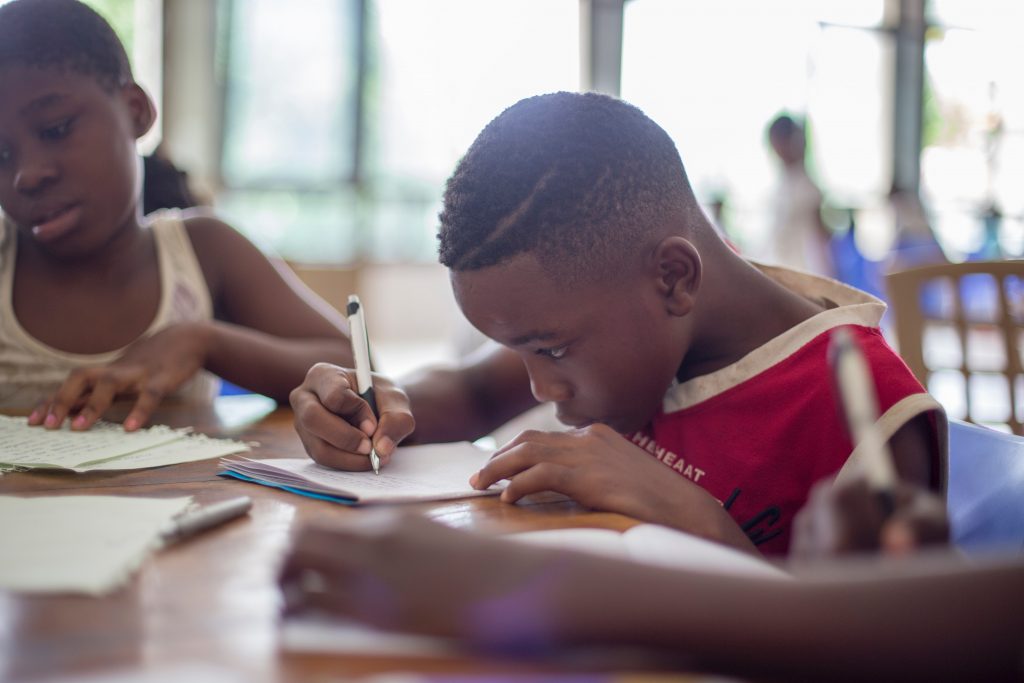Some parenting advice stays with you. I heard stories of separation anxiety long before we encountered it. This one piece of advice made a lot of sense and stuck in the back of my mind for when that day came: The more you linger, the worse it will be.
We didn’t have that problem on my oldest child’s first day of summer camp because he was all excited and just beaming in his new camp shirt. Then came the second day of camp, when he fought me every step of the way, from the car seat to the classroom. That happened one more time before we found a different camp that he just adored, but I’ve heard stories of and witnessed kids who just don’t want to be separated from their parents for school, whether that be the first week, random days or an entire year. Sometimes it gets better and sometimes it doesn’t.
Since last year unexpectedly gave families even more together time, I kept wondering if the start of the school year would be harder on kids. So I asked Rachel George, Head of Student Support at Yew Chung International School of Beijing (YCIS), if she could offer any tips for parents. Even if your kids aren’t showing signs of anxiety now, it could pop up the further into the year we go. I plan to implement some of her ideas around coping mechanisms right away!

Rachel George is Head of Student Support at YCIS.
It’s finally here! The first day of school is met with anxious excitement. This year is no different; except this year, we have been together more often than we have been apart. Through social distancing and quarantining, our family unit has been our comfort space. Leaving that space may mean anxiety of a different nature: separation anxiety. Although mainly seen in children younger than 12, it is normal for all of us to feel a little nervous about leaving our new normal and transitioning back into old routines. Even our beloved pets may feel the blues!
Children look to us as adults to determine how to think and feel. Start by working through your own concerns first. Do you have additional questions about safety measures at school? Would you like to know what may happen if a child falls ill? Getting answers to any lingering questions you may have will allow you to work from a clear headspace when you discuss back to school concerns with your child. Once you are settled, choose a proper time to chat. I think car rides, or on walks are a perfect time! Most importantly, choose a time where neither you nor your child are feeling rushed or hurried. For younger students, introducing the topic with a story at bedtime is a good way to open conversations. Some of my favorites are Ruby Finds a Worry by Tom Percival or Wemberly Worried by Kevin Henkes. Both books introduce the concept of worry and highlight ways to seek support when needed. There are excellent videos where these books are read aloud. Watch them first, and determine stop points for conversation!

Ruby learns that talking about problems is the best way to handle them.
Learn the new rules and structures in place at your child’s school and plan ahead. Most schools have posted pictures of what campus looks like, and routines for entering school (temperature checks, mask wearing, etc). What do these new routines look like, feel like, sound like? The more front-loading you do, the less anxious your child may be. Remember, stress emanates from a loss of control. Once our children have a sense of knowing what to expect, they will feel empowered!
If you began the school year virtually, make a list, detailing what went well during e-learning and what we can improve. Could there be more structure? Do we need to re-think the working space? Start making small changes now,
Open the lines of communication through these techniques:
Use a “worry jar.” This is a place where your child writes or draws worries about returning back to school and places them in the jar. This helps two fold: it allows your child the time to process their emotions, taking them out of their head and writing them on paper, makes the emotion tangible and something they can see. It also assists with building problem solving, an executive functioning skill, which is critical to academic success.

Add your worries here.
Once you see worries in the jar, choose a specific day of the week to discuss, maybe Tuesdays can be Talk about it Tuesday, or Worry No More, Wednesday! Take one worry from the jar and create a plan together!
Create a list of best case and worst case scenarios. Work together on developing a growth mindset for the tricky situations. Begin building up their positive self talk. Think of difficult situations they have conquered in the past: learning how to ride a bike, or how to skate. Remind them that they can do hard things. Tap into their resilience. You can even make a chart of all the mini success they have had so far and place them above their mirror. I am a huge believer in positive affirmations. The most important thing to do is listen. Restrain yourself from wanting to comfort them by saying “It’s OK.” “Don’t worry about that.” Although these comments are from a loving place, they do not allow your child to speak freely. Encourage them that their feelings are normal and valid.
Provide comfort. Adding little notes to their lunch box, or inside of a notebook is a sweet reminder that even though you are not together- you are thinking of them and know how strong they are. You can even put positive messages on the mirror in the bathroom for them to see in the morning when they are getting dressed, or brushing their teeth. Our minds replay thoughts, especially when we are stressed! Let’s make sure the thoughts our children have are positive ones!
Remain consistent. Make drop off less stressful by encouraging your child that there are supportive people at school that care about them. Help your child determine their school support network, so they know there people at school they can talk to if they feel anxious. This could be their teacher, the counselor, even a close friend. When you drop them off, give them a few positive words, a hug, and/or a kiss – then leave. This is the hardest part for us as parents; however, staying around too long after drop off will show your child that you are hesitating, which will make them wonder. Be straightforward and consistent, reminding them of when you will be back to pick them up, or when you will see them after school.
Create a coping toolbox. Coping skills are those tools we all can use when we face a stressful situation. Begin by teaching your child about their emotions and helping them to recognize the physical changes that happen when they get anxious. For example, does their face get hot, or their hands tingly? Teach them that their emotions are like signals, ways for their body to communicate with them so they may need to re-center and take charge of their bodies. I like to call it our super power! Speak with them about how amazing and powerful their brains are, and that this special super power tells them when to enlist their coping skills.

Just writing coping mechanisms down helps us remember them.
Make a list of what helps. When your child is in a calm state, ask them what helps them relax, calm down, or feel good? Have them make a list. You may see things like drawing, reading, deep breathing or grounding exercises. Together, determine which ones of these they could utilize at school. I particularly like the grounding exercise, which can be done anywhere. Take time to notice/focus on things that align with your senses, and choose one thing you can see, smell, hear, taste, and feel. Grounding helps our brains focus on the moment, being mindful of what is happening presently, and assists with alleviating anxiety. Perhaps your child may need to take a break for water, or a short walk around the learning space. These are great too! You can even write them down on the first page of your child’s notebook or planner: When I feel ____, I can_____. For example, when I feel frustrated, I can ask to get water. That way, they have a handy checklist of what to do! Once you have determined a few handy tools, communicate these with your child’s classroom teacher.
Remember to be patient and honest with yourself and your child. There are many unknowns as we begin the school year, and it is OK not to have all of the answers. Remain positive and supportive, and above all remind them that whatever challenges may come, you will get through them…together!
KEEP READING: How to Prep Your Kids for Their New Normal at School
Photos: Amazon, Unsplash, Pexels




